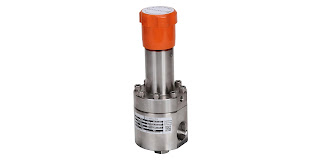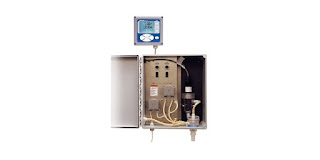 |
| Pneumatic control system volume booster replicates a control signal with higher available air flow at the output. Image courtesy ControlAir, Inc. |
The volume booster is connected to the air supply line, with the output routed to whatever device is to be controlled. The control signal to the volume booster originates at another device, such as a transducer, valve positioner or other control means.
This pneumatic input signal serves as the output pressure setpoint for the booster. The volume booster regulates the flow from the supply line to deliver the sepoint outlet pressure, while allowing the booster to flow the maximum volume of the supply line. Boosters may also be referred to as pilot-operated regulators, as your control or pilot signal maintains the outlet pressure control.
The regulated output of a pneumatic volume booster can be any of several options to match the driven device requirements.
- A direct reproduction of the pneumatic control signal
- A multiple of the pneumatic control signal
- A fraction of the pneumatic control signal
There is substantial flexibility in the configuration and variants of volume boosters, enabling selection of the right unit for every application. Share your pneumatic control system challenges with process automation specialists, leveraging your own knowledge and experience with their product application expertise to develop effective solutions.

